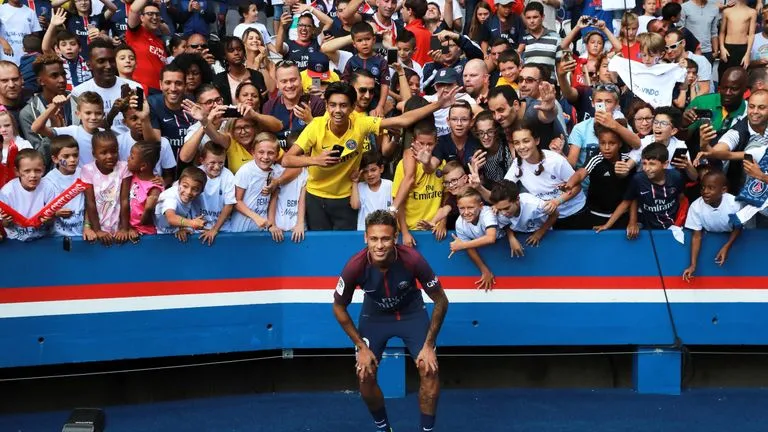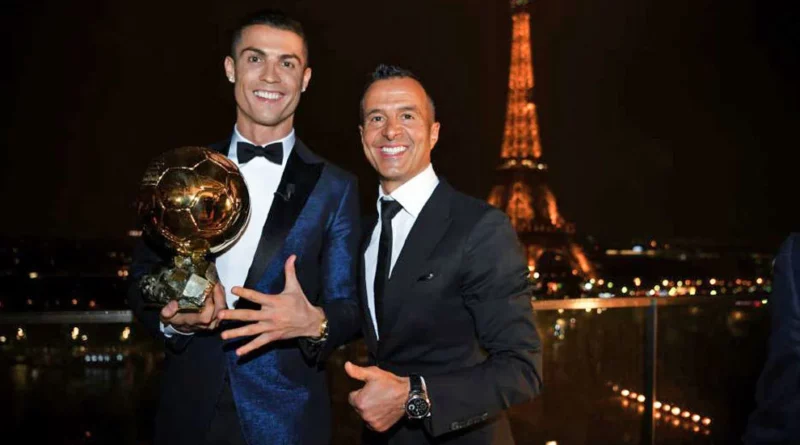Understanding release clause in football
Football has become a balance of business and sport in the modern era, and a release clause is a shortcut to sign a player breaking his contract.
The beautiful game has hit the jackpot giving rise to super agents and the huge growth of player wages as the transfer market has seen drastic changes in the last couple of decades and in the 2024 summer transfer window Premier League clubs spent £1.98 billion, slightly less than the previous season’s £2.36 billion, with even loan deals drawing whopping numbers as well. Player contract details changed due to the landscape, containing details that are becoming increasingly important.
The transfer release clause is one such detail mentioned in the contract during discussions about potential money moves.
Let’s deep dive into the details of the release clause and the crucial role that contracts and negotiations play in the deals. To understand the skeleton of the business let’s start with the first hand involved, the agents.
Football Agent

Football agents are professional footballers who map to the outside market taking care of their needs and requirements off the pitch. Their duties are multifaceted and majorly involve negotiating contracts to better player earnings, bettering their commercial value, and matching lucrative sponsorship deals that match their image. Additionally, providing advice on personal matters and in-hand guidance on financial concerns, such as advertisement and brand deals.
A football agent requires an array of skills to find success. This includes ensuring players sign with the right club for the right money, agents also should both good judgment and strong negotiation skills, which helps to have good relationships with people across the industry. To achieve this, interpersonal and communication skills are pivotal to the role, making networking look easy.
A big part of their job comes down to planning, contract structuring, and complex paperwork regarding their client’s benefit. Now let’s go to the next step.
The Role Of Contracts In Football
As football fans these terms sound very common, but here are the ins and outs of what happens at the top of the game. On the technical front, contracts are paperwork that contains the length of time a player stays at the club. This means, for the length agreed the player cannot move out of the team unless another club approaches with a transfer offer. This binding acts as a legal agreement that helps protect the club’s finances and the only way to acquire the player is to spend a huge amount of money according to the agreements in the contract.
Player Contract

Several terms and conditions are within a football contract. Firstly, the payment terms between club and player mostly come under the monthly cycle, even though many footballers’ are paid weekly. For top players, clubs also include a range of bonus fees as well.
Every club has its policies and may include even promotion or survival bonus, or an additional fee for European qualification. Goalkeepers have a clean sheet bonus on their contract, while strikers may have a goal bonus to receive additional income if they surpass expectations in terms of scoring.
To encourage strong team performances league points bonuses are also used, and are sometimes more preferred than individual player performances in lower leagues. For the big and wealthy clubs, influential players and their agents include a “Matching Highest Earner” clause that guarantees them equal wages, as the new high-profile signing.
For players, the signing fee will be negotiated within contract talks by the agents, to provide a potential loyalty bonus.
On other occasions, the sell-on clause in contracts ensures that if a club sells a player who later moves on to a third club for a substantial profit, they will receive a cut of that fee as a reward for their role in involved in the player.
Release Clause

Release clauses have evolved from being a less common term to the most well-known, after Neymar’s move from Barcelona to PSG.
In a player’s contract, the release clause has the pre-determined transfer fee stating that a club can automatically gain an initial offer for a player if the buying club pays the exact value.
This is like a bypass route, to have direct player interaction regarding the transfer negotiations. In this scenario, the obligation to buy is not completely open, but a club cannot be involved in the deal by one of their players speaking to another club if a release clause has been triggered.
While this is not a regular scenario for signing players release, it has happened on occasions involving huge names of the game. Liverpool bought Alexis Mac Allister from Brighton & Hove Albion by triggering a release clause of £35 million, after signing a new deal with the Seagulls last October. Chelsea activated Enzo Fernandez’s £105 million release clause to bring the midfielder from Benfica to the Premier League.
Buyout Clause
While the names, buyout clause, and release clause look the same, they are not.
A buyout clause is a way for players, to buy themselves out of their contract effectively. This is done when the buying club transfers the agreed fee to the player, who then sends this sum of money to their current club.
In Spanish football, it’s a very common clause designed to enable buyer clubs from acquiring players by attaching a huge fee. Generally, the buyout fee will be extremely high that are far more than the transfer market value of the player. This clearly shows that a club has no intention of selling a key asset, paving the way for increased loyalty from the player’s point of view.
A few top players especially Manchester City’s star striker Erling Haaland reportedly have a buyout clause worth €200m in his current contract that will come into play in the 2024 summer transfer market, permitting any club willing to pay that fee for negotiations at this point. Meanwhile, a numer of La Liga talents such as Pedri, Vinicius Jnr. and Ronald Araujo also have substantial buyout clauses mentioned in their contracts.
Buy Back Clause
Buy-back clauses are contract details used by clubs who expect the player to improve in another club, thus giving themselves the option of re-signing that player in the future.
Former Chelsea striker Tammy Abraham moves to Roma for £ 34 million in the summer of 2021, and the contract had a buy-back option stating that Chelsea could bring back the England international to the Bridge for £68 million in the summer of 2023. Eventually, the clause was not activated as Chelsea had other plans, but the option was there.
Overall, all this is for protecting financial assets. So if a rich club spots a young talent and then sells them on, they may regret the decision if the player achieves great success in the future, thanks to a buy-back clause that provides the time to allow them to re-sign the player for a reduced fee. Sadly, this strategy is something only the top clubs can afford.
FAQs
How does the release clause work in FIFA?
A release clause dictates that a club has to sell a player when it receives a bid over a certain amount
Who benefits from a release clause?
Players, as it helps them leave easily.
Does every player have a release clause?
No, only few of them do.
Also Read:
Uruguay icon Luis Suarez announces his retirement from International Football
Victor Osimhen has a surprise move on the cards after failed Chelsea deal
Coman set to stay at Bayern despite Al Hilal interest
